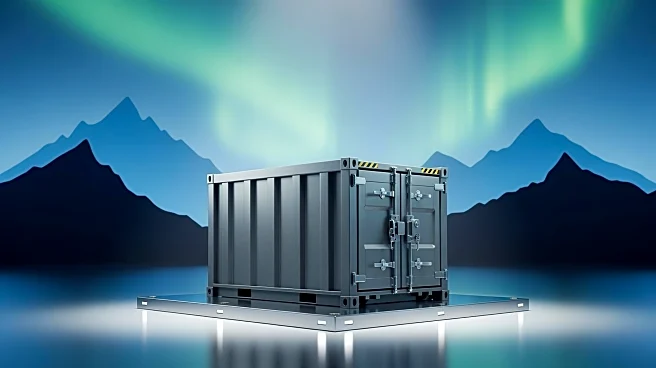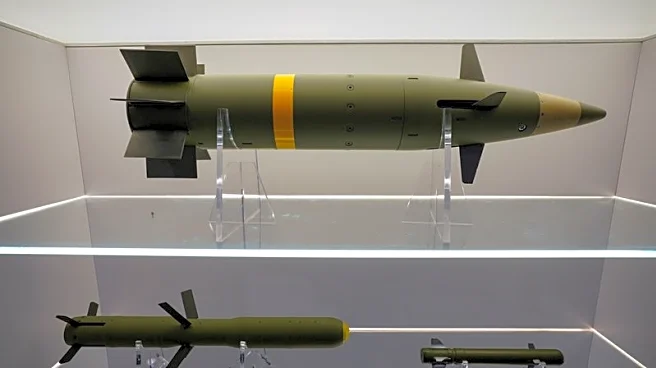What's Happening?
The United States Department of State has approved a potential Foreign Military Sale (FMS) of M142 High-Mobility Artillery Rocket Systems (HIMARS) and related equipment to Canada, valued at up to $1.75
billion. This development was announced by the U.S. Defense Security Cooperation Agency (DSCA) in a press release. The approval comes as Canada outlines its military priorities at the Future Armoured Vehicles Survivability (FAVS) 2025 conference in London. Colonel Daniel Fontaine, the Canadian Armed Forces' director of Armoured Vehicle Program Management, emphasized the need for enhanced fighting forces and lethality at range. He detailed priorities such as short-range air defense, anti-tank guided missiles, and electronic warfare. The Canadian Armed Forces are focusing on procurement strategies that reduce delivery times and increase capabilities, including Arctic mobility and integrated command-and-control systems.
Why It's Important?
The approval of the HIMARS sale to Canada signifies a strengthening of military ties between the U.S. and Canada, reflecting broader defense strategies in response to global security challenges. This move is crucial for Canada as it seeks to modernize its military capabilities and enhance its defense readiness. The acquisition of advanced artillery systems like HIMARS will bolster Canada's ability to defend its territory and contribute to international security efforts. The focus on Arctic mobility and integrated command-and-control systems highlights Canada's strategic interest in securing its northern regions, which are increasingly significant due to geopolitical shifts and climate change. The sale also underscores the U.S.'s role in supporting allied nations' defense capabilities, which is vital for maintaining stability in North America and beyond.
What's Next?
Following the approval, Canada is expected to proceed with the procurement and integration of the HIMARS systems into its military operations. This will involve logistical planning and training to ensure effective deployment and use of the new equipment. Additionally, Canada may continue to explore other defense acquisitions, such as the Gripen combat aircraft, as alternatives to the F-35 Joint Strike Fighter. The focus on reducing delivery times and increasing capabilities suggests ongoing efforts to streamline procurement processes and enhance military readiness. Stakeholders, including defense contractors and military strategists, will likely monitor the implementation of these priorities closely, assessing their impact on Canada's defense posture and international collaborations.














